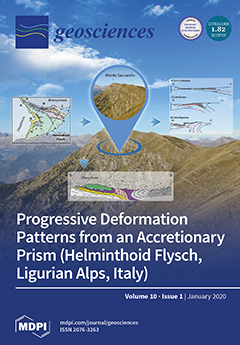Watershed-scale nonpoint source (NPS) pollution models have become important tools to understand, evaluate, and predict the negative impacts of NPS pollution on water quality. Today, there are many NPS models available for users. However, different types of models possess different form and structure
[...] Read more.
Watershed-scale nonpoint source (NPS) pollution models have become important tools to understand, evaluate, and predict the negative impacts of NPS pollution on water quality. Today, there are many NPS models available for users. However, different types of models possess different form and structure as well as complexity of computation. It is difficult for users to select an appropriate model for a specific application without a clear understanding of the limitations or strengths for each model or tool. This review evaluates 14 more commonly used watershed-scale NPS pollution models to explain how and when the application of these different models are appropriate for a given effort. The models that are assessed have a wide range of capacities that include simple models used as rapid screening tools (e.g., Long-Term Hydrologic Impact Assessment (L-THIA) and Nonpoint Source Pollution and Erosion Comparison Tool (N-SPECT/OpenNSPECT)), medium-complexity models that require detail data input and limited calibration (e.g., Generalized Watershed Loading Function (GWLF), Loading Simulation Program C (LSPC), Source Loading and Management Model (SLAMM), and Watershed Analysis Risk Management Frame (WARMF)), complex models that provide sophisticated simulation for NPS pollution processes with intensive data and rigorous calibration (e.g., Agricultural Nonpoint Source pollution model (AGNPS/AnnAGNPS), Soil and Water Assessment Tool (SWAT), Stormwater Management Model (SWMM), and Hydrologic Simulation Program Fortran (HSPF)), and modeling systems that integrate various sub-models and tools, and contain the highest complexity to solve all phases of hydrologic, hydraulic, and chemical dynamic processes (e.g., Automated Geospatial Watershed Assessment Tool (AGWA), Better Assessment Science Integrating Point and Nonpoint Sources (BASINS) and Watershed Modeling System (WMS)). This assessment includes model intended use, components or capabilities, suitable land-use type, input parameter type, spatial and temporal scale, simulated pollutants, strengths and limitations, and software availability. Understanding the strengths and weaknesses of each watershed-scale NPS model will lead to better model selection for suitability and help to avoid misinterpretation or misapplication in practice. The article further explains the crucial criteria for model selection, including spatial and temporal considerations, calibration and validation, uncertainty analysis, and future research direction of NPS pollution models. The goal of this work is to provide accurate and concise insight for watershed managers and planners to select the best-suited model to reduce the harm of NPS pollution to watershed ecosystems.
Full article





